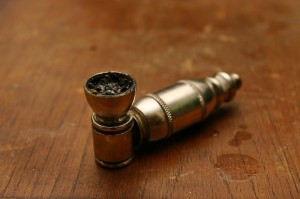Spice Addiction
 Spice is one of many versions of synthetic marijuana that have hit the black market in recent years. The number of people who abuse the drug and develop dependencies increase every year despite the growing body of evidence that all forms of synthetic marijuana, including spice, are exceedingly dangerous.
Spice is one of many versions of synthetic marijuana that have hit the black market in recent years. The number of people who abuse the drug and develop dependencies increase every year despite the growing body of evidence that all forms of synthetic marijuana, including spice, are exceedingly dangerous.
The National Institute on Drug Abuse (NIDA) reports that spice is sold under a number of different names, including:
- K2
- Moon Rocks
- Yucatan Fire
- Fake weed
Though these items are labeled as “not for human consumption,” they are often found on the shelves of convenience stores, truck stops, head shops and online. Many abuse the drugs by smoking them. Packages of spice contain an herbal mix that looks like shredded plants and leaves but also includes chemical additives that were developed to provide the user with feelings that are similar to the effects of smoking marijuana or hallucinogenic drugs.
Synthetic drugs like spice are not safe, and they are mind-altering substances. If your loved one is abusing spice and is unable to quit alone, help her to get the treatment she needs to avoid the risks that come with long-term spice abuse by contacting us at The Orchid today. Our counselors are standing by to assist you.
Dangers of Spice Addiction
Why are synthetic drugs like spice so dangerous? There are almost too many reasons to count. Some of the biggest issues include:
- Lack of research into effects. Very little has been done in laboratories to determine the short-term and long-term physiological effects and damage done to users by these substances. There is no way to know what risks are being taken, especially in terms of chronic health issues down the road.
- Anecdotal evidence of short-term effects. The number of emergency room admissions linked to abuse of synthetic substances has spiked in the past few years, and more than a few suicides, acts of bizarre and aggressive behavior, and serious accidents have been reported in connection with the use of spice and other synthetic substances.
- False advertising. Many spice products are labeled as “herbal” or “natural” to imply that they are in some way healthy or at least non-toxic or not harmful. However, the fact is that the synthetic chemicals that give them their hallucinogenic properties are the furthest thing from natural, herbal or harmless. Their active ingredients are not natural substances derived from plants but synthetic substances created in a lab.
- Not easily detected by drug tests. Because synthetic cannabinoids available on the market are constantly changing in chemical makeup in order to outrun the law, drug tests can’t keep up and few tests are able to consistently detect the presence of the drug in the system of the user. This can especially be problematic in an emergency medical situation when it is unclear what drug is causing the reaction.
- Easy access for young people. Synthetic compounds like spice are easily found in local shops and online legally so even young people who cannot buy alcohol or who are averse to seeking out a dealer to sell them other substances can easily access spice.
- All the same risks that come with addiction to any drug. Dependence upon any illicit substance is damaging. Addicts risk accident under the influence, devastating and irreversible medical problems, overdose and death, as well as a wide range of life-changing social, behavioral, mental health and financial issues.
Legal Status
 A report published in the journal Frontiers in Behavioral Neuroscience says that the legal status of spice and other synthetic substances has contributed to its popularity, especially among young users. Many users don’t realize that the drug is legal not because it is safe – it even says on the package “not for human consumption” – but that it is legal because it has not been in use long enough for it to be studied and determined to be unsafe officially.
A report published in the journal Frontiers in Behavioral Neuroscience says that the legal status of spice and other synthetic substances has contributed to its popularity, especially among young users. Many users don’t realize that the drug is legal not because it is safe – it even says on the package “not for human consumption” – but that it is legal because it has not been in use long enough for it to be studied and determined to be unsafe officially.
However, due to the anecdotal evidence that quickly amassed on the number of dangerous issues often associated with using synthetic drugs, the US Drug Enforcement Agency (DEA) utilized its emergency scheduling powers to classify five different types of synthetic substances as Schedule I drugs, which means that they are not to be used for any purpose, including medical, and that it is illegal to be under their influence or have them in your possession.
According to the Office of National Drug Control Policy, the timeline of legislation regarding synthetic marijuana includes:
- 1984. The DEA is granted the power to schedule a new substance as a Schedule I drug when it is deemed as an “imminent hazard to public safety.”
- Up until 2010. Synthetic substances begin to appear as the cause of emergency room admissions and show up in law enforcement notes. No regulations exist to control these substances on the state or federal level.
- March 2011. The DEA uses its emergency scheduling power to classify five synthetic cannabinoids as Schedule I substances for a year.
- At least 38 states initiate action to limit or outlaw use or possession of one or more synthetic substances.
- Congress considers legislation to ban a number of synthetic substances permanently.
- December 2011. The Synthetic Drug Control Act is approved by the House of Representatives and the Department of Justice supports it.
Unfortunately, because synthetic substances are chemical compounds created in an underground lab, chemists have only to adjust one or two minor things to create a new version of the drug that is unregulated but still provides the same hallucinogenic and mind-altering effects. It’s almost impossible for law enforcement to keep up in terms of outlawing the new chemicals as they hit the street.
Additionally, the legislation is so rapidly updated to keep up with new versions of the drug, it is not readily apparent whether or not the substances available for sale are legal or not, and consumers risk being the guinea pig of black market chemists who are trying to make a buck at their expense.
Identifying Spice Addiction
Many people who do not abuse drugs are unfamiliar with spice and other synthetic substances and may not immediately recognize the drug or its effects. Concerned friends and family members are recommended to look for:
- Paraphernalia. If you find commercial packages marked as spice or any of the names listed above in your loved one’s possessions, smoking materials, and other paraphernalia that indicate drug use, synthetic cannabinoids may be a problem.
- Personality changes. If your loved one is lying about drug use even though you can clearly see that it’s an issue for them, if they change friends or drop personal interests, if their mood begins to dip dramatically for no apparent reason, they may be experiencing changes induced by their continued abuse and use of illicit substances like spice. Additionally, under the influence of spice, your loved one may exhibit erratic or aggressive behavior.
- Negative consequences. Chronic drug use can impact every part of the addict’s life. In fact, it is rare to find a part of their life that is unharmed by drug use when it reaches the level of addiction. Employment, family, finances, personality, health – it all goes by the wayside as the addicted person pursues more of their drug of choice and staying high at all costs.
- Inability to quit. If the addicted person confesses to having a drug abuse issue – if not an addiction – and understands the concern of those close to her, she may promise to quit getting high and genuinely want to follow through on her promise. However, she may be unable to do so for more than a few days or a week at a time and feel guilty and angry that she cannot stay sober on her own, justifying her choice to use drugs in order to deflect any inquiries into her behavior.
All of these issues are not just signs of addiction to synthetic substances like spice; they are clear indications that it is time for your loved one to undergo comprehensive treatment designed to help her stop using drugs immediately.
The Orchid Can Help
Here at The Orchid, we offer women a safe and therapeutic environment in which to begin the healing process after long-term drug abuse and addiction. Through medical detox and supervision and the provision of extensive, evidence-based psychotherapeutic treatment that addresses the unique needs of women in recovery, we can help your loved one to leave drugs and alcohol behind as she begins to build a new life for herself in sobriety.
Our program provides your loved one with:
- Personalized treatment designed to address her unique needs and experience
- Medical care as necessary to address withdrawal symptoms and any underlying medical issues
- Mental health treatment to address co-occurring disorders or symptoms that may be exacerbating or driving her drug use
- Holistic and hormonal therapies that provide the skills to manage health and wellness with the goal of maintaining sobriety
- Long-term aftercare support to encourage continued sobriety and avoidance of relapse throughout the transition into sober life
If you would like to learn more about our rehabilitation program for women here at The Orchid, our counselors are available to take your call today. Contact us at the phone number listed above and get the answers you need to help your loved one begin her own personal journey to a life defined by wellness, balance, and optimum health instead of drugs and addiction.
